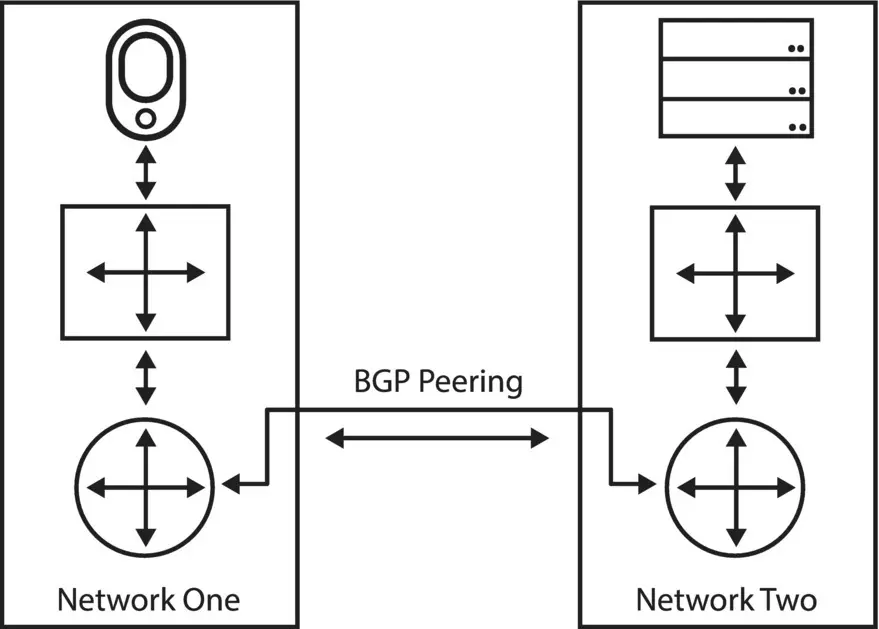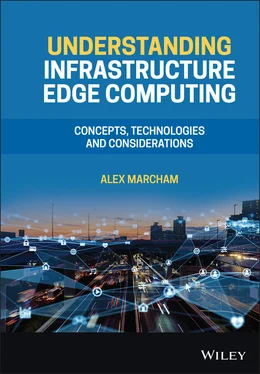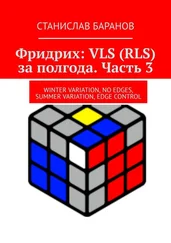Alex Marcham - Understanding Infrastructure Edge Computing
Здесь есть возможность читать онлайн «Alex Marcham - Understanding Infrastructure Edge Computing» — ознакомительный отрывок электронной книги совершенно бесплатно, а после прочтения отрывка купить полную версию. В некоторых случаях можно слушать аудио, скачать через торрент в формате fb2 и присутствует краткое содержание. Жанр: unrecognised, на английском языке. Описание произведения, (предисловие) а так же отзывы посетителей доступны на портале библиотеки ЛибКат.
- Название:Understanding Infrastructure Edge Computing
- Автор:
- Жанр:
- Год:неизвестен
- ISBN:нет данных
- Рейтинг книги:4 / 5. Голосов: 1
-
Избранное:Добавить в избранное
- Отзывы:
-
Ваша оценка:
- 80
- 1
- 2
- 3
- 4
- 5
Understanding Infrastructure Edge Computing: краткое содержание, описание и аннотация
Предлагаем к чтению аннотацию, описание, краткое содержание или предисловие (зависит от того, что написал сам автор книги «Understanding Infrastructure Edge Computing»). Если вы не нашли необходимую информацию о книге — напишите в комментариях, мы постараемся отыскать её.
Understanding Infrastructure Edge Computing
infrastructure edge computing
Understanding Infrastructure Edge Computing
Understanding Infrastructure Edge Computing — читать онлайн ознакомительный отрывок
Ниже представлен текст книги, разбитый по страницам. Система сохранения места последней прочитанной страницы, позволяет с удобством читать онлайн бесплатно книгу «Understanding Infrastructure Edge Computing», без необходимости каждый раз заново искать на чём Вы остановились. Поставьте закладку, и сможете в любой момент перейти на страницу, на которой закончили чтение.
Интервал:
Закладка:
Network virtualisation is a key topic which will be referenced in later chapters, and VLANs provide us with a framework upon which we can build our understanding of this topic. Consider the following example of a single LAN which is connecting multiple endpoints by using a common set of physical resources. However, each of these endpoints is owned and is operated by a different department within the same company, each of whom has very strict requirements for who has access to their network and how their network operates. The network architecture team now has two choices:
1 Construct a separate physical network for each department at excessive cost and complexity.
2 Use a single physical network and logically split it into virtual networks for each department.
As you might imagine, the second option is far more attractive from a cost standpoint as long as the underlying physical network is capable of supporting the combined requirements of all of the logical or virtual networks used by each department. This is an example of network virtualisation making a single, common physical network capable of multi‐tenant operation, rather than just single tenant. This is itself another key trend which will be returned to throughout later chapters, as it has enabled many telecoms networks and data centres to become increasingly economically viable worldwide. Without supporting multi‐tenant operation, investing in these physical pieces of infrastructure is a greater challenge, and so the ability of the industry to provide ubiquitous services is greatly reduced.
For an example of how this works from a technical perspective, consider the following traffic flow:
1 An endpoint on VLAN 1 sends traffic to another endpoint on VLAN 1. That destination endpoint happens to be across the network, with traffic passing through a single switch.
2 As the switch receives the traffic, it recognises that it is from an endpoint that is assigned to VLAN 1. This may occur because the traffic was already tagged (using the VLAN tag field, which the 802.1Q standard by the Institute of Electrical and Electronics Engineers (IEEE) added to the standard Ethernet header), or it may occur because the switch has been configured to recognise that all endpoints on an interface are in a specific VLAN, and so when it receives standard untagged traffic, it tags them itself.
3 The switch consults its switching table, which as well as being a record of where destinations for traffic are located across the network is also a record of which interfaces and endpoints reside in which VLANs. This means that even if traffic arrives from an endpoint on VLAN 1 and the switch does not know the location of its destination, it will flood a request for that destination out of interfaces it knows are assigned to VLAN 1 only. This keeps each VLAN operating separately from one another. The switching table in this example does know the location of the destination, and so the traffic is sent out of the corresponding interface.
4 The destination endpoint receives the traffic, and no endpoints on any other VLAN were aware of what was sent or if anything was sent because each VLAN operates separately.
The trend of network virtualisation follows similar trends that have been seen at the server level in the past decade, where virtualisation tools such as virtual machines (VMs) and containers have been instrumental in allowing multiple applications or instances of operating systems (OSs) to operate in harmony alongside one another atop the same piece of physical server hardware. Much like in our VLAN example, these separate logical entities are unaware of each other despite operating on the same physical resources. This is vital as it allows entire companies who may be competitors to be capable of operating on the same physical infrastructure, as long as they are logically separated.
VLANs are a very common example of this trend as applied to networks, but they are far from the only example. Network virtualisation and isolation between users of the same physical underlying infrastructure can be achieved at layer 3 as well, using technologies such as virtual routing and forwarding (VRF). With VRF, a router operates with multiple instances of a routing table at the same time; these routing tables do not share routes, and so they operate in much the same way as VLANs do, with traffic being handled by each independent routing instance depending on the interface the traffic was received on, or other tagging criteria applied to that traffic to direct it to a specific table.
The ability of these and other technologies to enable a piece of physical infrastructure to support multiple users while concurrently isolating their activities from one another is, as briefly mentioned above, a key consideration; the ideal infrastructure edge computing system is itself multi‐tenant and so requires this type of isolated multi‐user operation at many levels throughout the entire system to be as attractive as possible economically to both its customers and its operator, spanning from the network infrastructure required to support it through to the distributed data centres themselves.
3.6.3.2 Network Boundaries
In the previous sections in this chapter describing the functions of layer 2 and layer 3 of the OSI model, intranetwork and internetwork network endpoint addressing were described, respectively. This leads to the question: How can we determine the boundaries of a network for the purpose of endpoint addressing? Where should switching end and routing begin to be used in a given network?
The majority of networks use a combination of both routing and switching at different locations to operate effectively. On a local network segment or subnetwork where a router connects directly or via a switch to endpoint devices such as PCs or printers, it may seem simpler to use switching and rely on layer 2 alone. However, a network architect or administrator may opt to use layer 3 across the entire network. In this case, switching is still used, as can be seen in the following example.
To describe how routing and switching are used together across the same network, we will return to the diagram we used previously for our routing process example earlier in this chapter. Segments of the network which operate only at layer 2 have been described in this section, as has the routing process, so this example will cover how layer 2 switching supports layer 3 routing operations (see Figure 3.2).

Figure 3.2 Routing and switching at a network boundary.
Returning to our description of the OSI model and its use of layers, this example shows that a single layer cannot operate in isolation and successfully pass information between endpoints across the network. This example of routing and switching being used together shows how layers 1 through 3 interoperate closely to achieve this goal and are supported in turn by other layers.
This process is repeated for each of the steps in the routing process that require traffic forwarding:
1 An endpoint (whether a router or not) determines where to forward received traffic to, based on that endpoint’s knowledge of the network topology, as from its routing table.
2 Before the traffic can be sent, the layer 2 address of the next hop destination for the traffic must be determined. Remember that in the OSI model, as we send traffic we must traverse down the stack towards layer 1. We cannot simply skip layer 2 just because we are using layer 3 addressing as well in the network. Our IP packet at layer 3 will first be encapsulated in an Ethernet frame at layer 2, which needs a pair of source and destination MAC addresses. The source MAC address is that of the interface about to send the traffic on to its destination; but the destination MAC address may not be known yet.
Читать дальшеИнтервал:
Закладка:
Похожие книги на «Understanding Infrastructure Edge Computing»
Представляем Вашему вниманию похожие книги на «Understanding Infrastructure Edge Computing» списком для выбора. Мы отобрали схожую по названию и смыслу литературу в надежде предоставить читателям больше вариантов отыскать новые, интересные, ещё непрочитанные произведения.
Обсуждение, отзывы о книге «Understanding Infrastructure Edge Computing» и просто собственные мнения читателей. Оставьте ваши комментарии, напишите, что Вы думаете о произведении, его смысле или главных героях. Укажите что конкретно понравилось, а что нет, и почему Вы так считаете.












